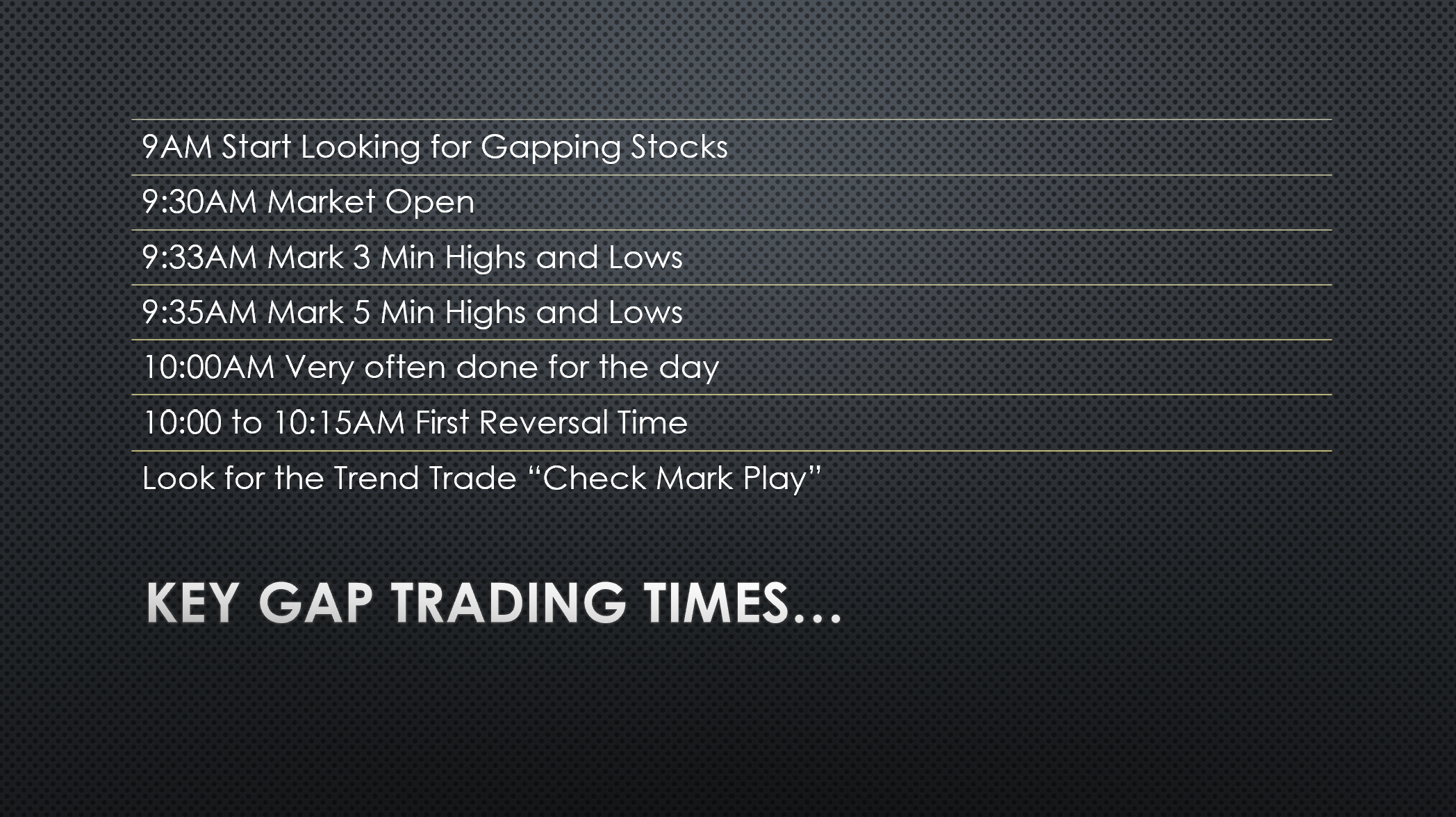Generally, gap trading starts right at the open. Only on a few exceptional occasions should you actually get in pre-market. When prepping for gap trading, start right around 9 o’clock to get an accurate estimation as to where the stock will actually open up. Pre-market swings could be big on stocks that just had news. Remember, gap trading works best on stocks that have had news that has caused volatility. The most predictable gaps are those caused by earnings, as these news events are planned at least a week or two in advance and everybody is expecting the earnings results. The first thing to do in prepping for gap trading is to have a daily chart lined up next to a pre-market one or two minute chart. Mark the levels of support and resistance on your pre-market chart and match them up to where prior daily support and resistance levels are.
The entire point of pre-market prep is to eliminate all the lower odds trading opportunities so that the trader can focus on the highest odds opportunities once the market opens. Try to focus on about 20 total stocks to scan and try to find 2-3 best long opportunities and 2-3 best short opportunities from all the stocks you scanned.
The trader may want to mark off the key levels on the intraday charts by placing a horizontal line on the major resistance or support point from the pre-market.
 Above is an example of where you mark off support on pre-market charts using DAS Trader.
Above is an example of where you mark off support on pre-market charts using DAS Trader.
Once the trader has a list of top stocks to trade when the market opens, set up and charts are marked up on the stocks that compose that list, the trader is ready for the opening bell.
9:30 Market Open until 10:15
When the market opens, the first 3 – 5 minutes can be extremely volatile. Markets can whip all over the place so it’s generally a good idea not to take a position or put out an order at this time. If you do put out an order make sure that you only use limit orders for the first few minutes of each day as you don’t want to get filled on a bad volatility spike.
After three minutes, mark off the 3 minute highs and lows. After five minutes mark off the 5 minute high and lows. These are key levels for gap trading as they trigger time based entries. Watch to see if any of your trade ideas trigger after the first five minutes of the trading day. Gap trading time is from market open until 10:15, which is called the first reversal time. This is the period of time we have stocks gapped up; those gaps will fade down into the 15 minute trend direction so they can resume their general 3-day trend after 10:15. If stocks gapped down they will generally fade up into their down trend direction. When they get into their 3-day downtrend levels, they will then resume their downtrend around 10:15 which is why this is known as a key reversal time. Remember, all of these times are general estimates as to when these events should occur.
Written by Michael DiGioia, Director of Education
Mike is available for One-on-One Coaching. Learn More






